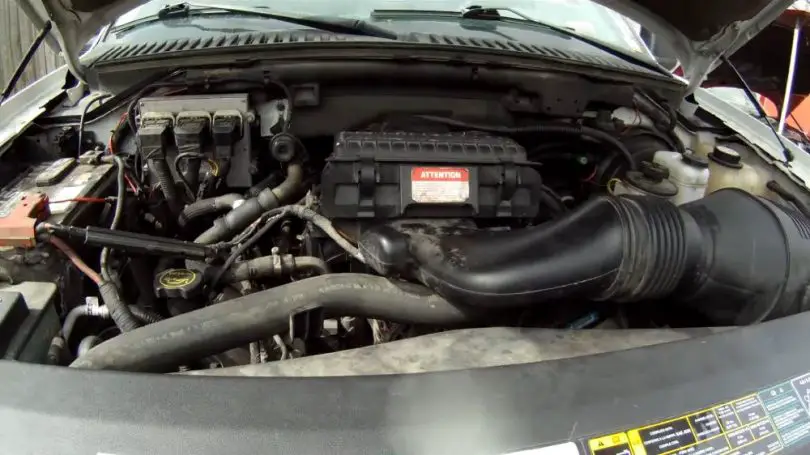A Cam phaser is essential to the performance of your engine, yet few people understand what it does and how important it is. Here we look at what cam phasers do, the signs of a bad cam phaser, the damage faulty cam phasers can do to the engine, and how long you can drive with a bad cam phaser.
Cam Phaser: What is and How it Works
The cam phaser is a mechanical engine component that controls the camshaft. It sits on the cam drive sprocket and is run by the car’s computer.
You must have cam phasers that operate correctly because they work with the crankshaft to ensure the valves open and close properly to maintain that the engine’s timing is regular. The cam phaser regulates the camshaft to ensure the car accelerates when you step on the gas pedal and ensures the car runs better at lower RPMs.
Cam phasers in racing cars
The cam phasers used on racing cars keep the intake valve open longer to increase the amount of air to the engine. The high speeds achieved in racing require more air to maintain the car’s speed.
Unfortunately, racing cams also keep the intake valve open longer at lower speeds, which leads to unused fuel burning off in the exhaust valve and creating unwanted emissions and poor fuel consumption.
When a variable valve timing (VVT) engine works as it should, the intake valve opens based on the car’s need and adjusts its timing.
Signs the Cam Phaser is Bad
Check engine light on the dashboard is lit
This is the first sign most of us notice, the check engine light. If you scan for a code, it may read the engine is running rough, give a cam phaser code or offer a generic code for the vehicle.
Fuel consumption increases
As the valve stays open longer, unused fuel burns and reduces your gas consumption, and it will also affect the car’s performance.
Loses engine power
Power loss is the most common sign of a faulty cam phaser. You will notice it most on acceleration. Overestimating how much you can accelerate is dangerous as you move into traffic.
Throttle surges
Throttle surges or the speeding up and slowing down of the engine as you accelerate is often accompanied by jerking of the car. It is as annoying as it is dangerous. While it is often a camshaft issue, it can also signify bad cam phasers.
Reduction in engine performance
The reduction in engine performance is felt as you step on the gas, and the engine is slower to respond, like the engine is holding back. In some cars, it will result in limp mode where the car shuts off accessories using power such as the air conditioning to compensate for the power reduction.
Why cam phasers go bad
Most cam phaser issues revolve around the oil. Oil pressure that is too low, results in the cam phaser not being able to do its job because it will not be in the right place at the right time. Poor oil pressure could be due to a faulty oil pump.
If the oil is too low, the wear and tear of the engine components will increase as they need the oil to combat the friction. Poorly lubricated cam phasers speed up the wear and tear of the cam phaser and the other engine parts. A low oil level could mean there is an oil leak.
Using the wrong oil weight hinders the pressure the cam phaser needs to be in the correct position. There is specific viscosity a cam phaser needs to respond efficiently. Poor viscosity will affect the cam phaser timing.
Regular oil changes are vital for many reasons, and the cam phasers are one of them. Dirt and grime make oil thicker, which leads to a slower cam phaser response time.
Issues with the electrical control unit (ECU)
The electrical control unit will go into protective mode and lock the VCT, which limits the RPMs and reduces horsepower.
Gear and sprocket damage
If gears or sprockets sustain damage, it can wear out the cam phaser. Some vehicle owners install friction modifiers to counteract this issue.
What Happens if You Drive With Bad Cam Phasers?
VCT system damage
Your VCT systems open and close valves at the ideal time, so if the cam phasers are faulty, they won’t control the valve’s timing, thus damaging the VCT system.
Warm-up mode
When the valve timing is affected by the cam phasers, some engine parts may get too hot and damage the VCT system.
Cam phaser rattling
The lack of lubrication in the cam phaser compartment wears down the cam phasers and creates a rattling or chattering when the car starts. Getting this check quickly is key to eliminating damage to the cam phasers.
Increased emissions due to poor gas efficiency
The solenoids send their signals through the cam phaser. The signal is not transmitted when the oil pressure is too low, increasing gas emissions.
Poor engine performance
The powertrain control module in a well-running engine ensures the intake valve opens as the engine needs it to. Faulty cam phasers inhibit the powertrain from controlling this valve, decreasing the engine’s performance.
Over time, all the above issues can cause severe damage to an engine that is costly to repair. Choosing to drive with bad can phasers can be dangerous and costly.
Is there a set period before my faulty cam phasers damage the engine?
There is no set time. You can drive the vehicle until it stops running. But…the longer you drive a car with bad cam phasers, the worse the engine damage will be.
Driving with bad cam phasers leads to costly replacement of the electrical control unit, selenoids, and your engine.
Having problems checked out before they cost you lots of money makes sense.
What is the cost of replacing cam phasers?
Cam phaser replacement is cheaper at a local mechanic or repair shop at under $900. The replacement cost is significantly higher at a dealership where they charge anywhere from $1500 to $3000.
The best way to avoid cam phaser problems
While you can’t eliminate cam phaser issues, you can be proactive by changing your oil every 3000 to 5000 miles depending on the vehicle.
Check your oil level weekly and use the manufacturer-recommended oil in the vehicle










Leave a Comment